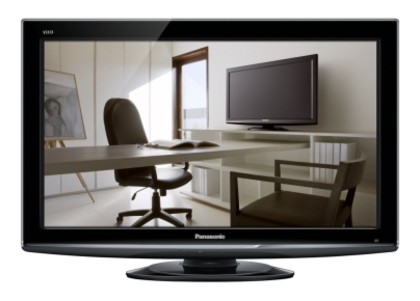Why you can trust TechRadar

Although the TX-L32S10B can handle 24p playback from Blu-ray, our Oscar-winning test disc Gandhi does include some irritating judder. It's mainly a problem during slow camera pans across the middle distance, though there's a jumpiness to moving close-up shots, too.
We also noticed some blur and resolution loss as the population tries to flee the Amritsar massacre show, and without 100Hz processing the TX-L32S10B is helpless to prevent it. Otherwise, the Amritsar scene shows some good work, with strong colours and well-defined edges, though it's not the most detailed image available at this size.
Although there is the unusual slight bias in the colour palette towards red, it's barley noticeable and doesn't hugely detract from an overall realistic reproduction of flesh tones. Banding is also banned from proceedings, with a smooth gradation of colours helping to create a HD picture that's always watchable.
Its slight lack of sharpness is also evident on another Ben Kingsley movie, Transsiberian on Blu-ray; its fast action, snowy scenes prove a showcase for both the TX-L32S10B's bright peak whites and cinematic handling of mixed-contrast scenes, though once again some blur takes the edge off the finished image.
Weak contrast levels
However, the TX-L32S10B's lack of contrast is its main weakness, with a tinge of blue creeping into dark areas, but that doesn't affect a generally impressive realism to images. Though not as convincing as on higher-end sets in the Viera range, dark areas and colours don't fade much at all if you watch from the wings rather than head-on.
That said, there is a bluish tinge to dark areas if you watch from the extremities. That may affect gamers, though for anyone with a Xbox 360 or PS3, the TX-L32S10B does seem a good choice. Paired with its Full HD resolution, that wide viewing angle makes it a genuine candidate for gaming nights.
Sign up for breaking news, reviews, opinion, top tech deals, and more.
Used with Pro Evolution Soccer 2010 on Xbox 360 the TX-L32S10B creates a smooth and colourful image, but again there's a jot less visible detail and contrast than on rival sets.
Standard definition on the TX-L32S10B does suffer from some serious scaling issues. Top Gear on BBC2, direct from the TV's built-in Freeview tuner, reveals lots of artefacting around the presenters in the studio, with ill-defined edges and blocky backgrounds. The panel's brightness keeps Freeview looking vibrant, but overall, we've seen a lot better attempts.
Underwhelming performance
More SD images from our Planet Earth test DVD equals more pictures that underwhelm. Fed from a DVD player via HDMI, the TV's own scaler doesn't do a great job, failing at upscaling to any useful degree, though aside from sharpness the varied pictures are watchable.
A mixed bag of pictures, perhaps, but actually the TX-L32S10B's performance is just above our expectations. Full HD sets regularly have problems with SD sources, and in the absence of Panasonic's very latest picture processing circuitry, that remains the case here.
Black levels are also lower than we'd like, but alongside strong colours and a wide viewing angle, it's the TX-L32S10B's lack of motion blurring that leaves us with a favourable view of this entry-level LCD TV.

Jamie is a freelance tech, travel and space journalist based in the UK. He’s been writing regularly for Techradar since it was launched in 2008 and also writes regularly for Forbes, The Telegraph, the South China Morning Post, Sky & Telescope and the Sky At Night magazine as well as other Future titles T3, Digital Camera World, All About Space and Space.com. He also edits two of his own websites, TravGear.com and WhenIsTheNextEclipse.com that reflect his obsession with travel gear and solar eclipse travel. He is the author of A Stargazing Program For Beginners (Springer, 2015),
